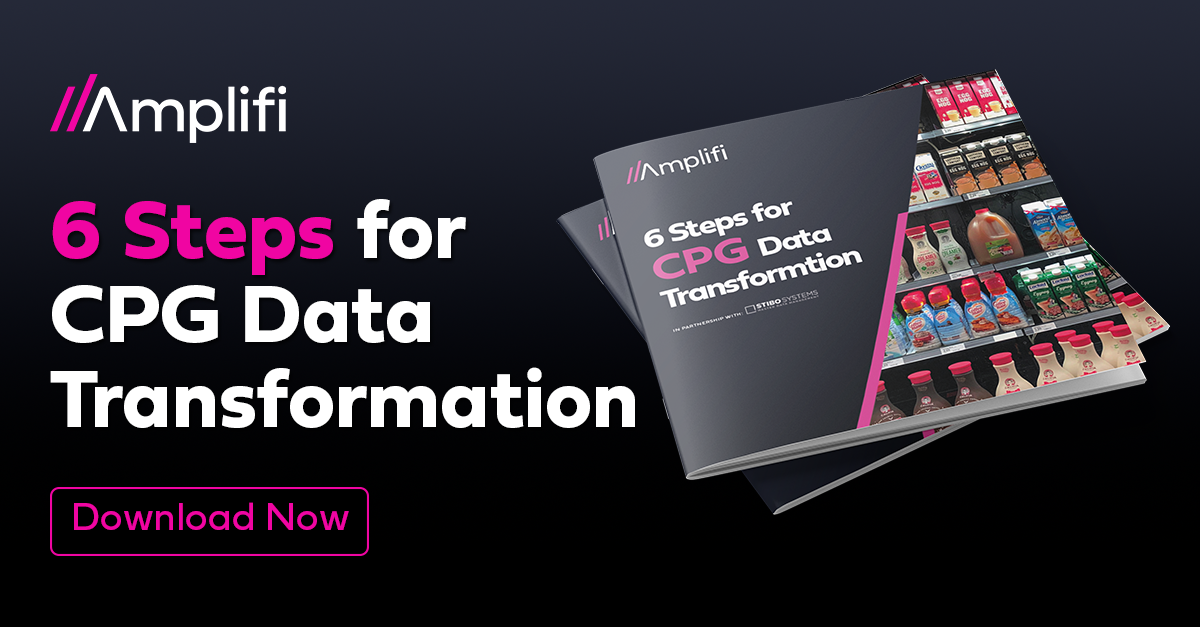The demand for sustainable and socially conscious business practices is on the rise. Especially in segments with high product churn, like fashion and consumer packaged goods (CPG).
In fact, Forrester Research recently declared environmental sustainability “a historic business opportunity on par with the first and second industrial revolutions.”
In other words, sustainability is the next big CPG differentiator. And as we discussed in our previous article, many stakeholders are paying close attention to your next steps.
For CPGs, this brings significant data implications. Read on to learn why data management and data governance are foundational steps to support ESG and sustainability in CPG.
Putting the Spotlight on Sustainability Data Management
CPG brands and manufacturers have various data to juggle — product information, digital assets, supplier data, customer data, and beyond. Keeping this data clean and well-managed is crucial to running a successful business.
Now, a new subset has entered the scene: sustainability data. And it’s taking a leading role — thanks to the growing demands of governments, NGOs, and consumers.
It’s important to know that “sustainability data” does not refer to a singular data domain. Instead, this term refers to data extracted from your suppliers, product information, location data, and financial data used to support sustainability practices. This data must be collected, calculated, and curated to support compliance, reporting, and customer experiences.
Let’s look at three examples below of how sustainability data takes shape:
-
Supplier Data
Tracking supplier data is essential for mitigating risks and quickly switching suppliers. It can help you:
- Identify which suppliers partake in buyback programs, or suppliers that comply with your standards for recycled materials and other sustainability criteria.
- Capture data on bill-of-materials, sustainability, and ESG programs of suppliers, including certificates and audit reports.
- Ensure updated contact information and contracts.
-
Location Data
Managing location data is crucial to supply chain transparency, helping you:
- Identify manufacturing plants.
- Capture data on product quality, manufacturing methods, storage conditions, logistics, work environment, water consumption, waste management, etc.
- Link the two (location and contextual information) to fuel decisions to support and promote sustainability.
-
Product Data
CPGs deal with nearly endless product data and assets that aid sustainability. When governed, this data can enable you to:
- Share information throughout the product lifecycle, from correct labeling to disposal information and how to return/recycle products.
- Accurately represent the percentage of the product that comes from recycled goods, so it’s available on product tags across sales and marketing channels and in stakeholder reporting.
- Deliver information and digital assets — like certification logos printed on packaging — that inform consumer purchasing decisions.
It’s All About the Insights
Calculating, aggregating, and mapping this variety of data requires expertise, as well as master data management (MDM) technology to support workflow and collaboration. When organized and linked together, you can glean data insights that answer questions like:
- Is this product ethically sourced?
- Are suppliers adhering to sustainability contracts?
- Are qualified alternate suppliers available?
- Is the product labeled correctly for sustainability?
- Do manufacturing processes impact resellers’ sustainability contracts?
- How is sourcing and sustainability data provided to resellers/retailers and consumers?
Show Me the Proof
A significant part of sustainability is evidence, i.e., the ability to track data throughout the supply chain and product lifecycle to back up your claims. Consumers, regulators, and investors need to trust you — and they want proof.
According to GWI, two in three consumers think brands that make a public promise to be sustainable are more trustworthy. But fail to back up those claims? You may be branded as greenwashing — and no CPG brand wants that reputation.
Given the pressure to deliver data and metrics, the success of CPG sustainability lies in data management and data governance practices that deliver transparency and traceability.
For example, say you support a circular economy initiative to buy back and repurpose used skincare packaging that would otherwise head to a local landfill. This approach can reduce sourcing costs and create new revenue streams while meeting sustainability demands.
But first, you need greater visibility and control over the recycled and externally sourced materials as they flow through the product development process and supply chain. You must also be able to produce the metrics to answer stakeholder questions and analyze the results to drive future initiatives.
Yet this can be a significant challenge for companies burdened by disconnected systems, siloed teams, and inefficient processes.
Sustainability Starts With Centralized Data
Adrian Carr, Forbes Technology Council Member and Stibo Systems CEO, recently noted in Forbes that “If you aren’t already approaching your sustainability strategy from a data perspective, now’s the time to start.”
This is where master data management (MDM) comes into play.
An MDM platform provides a central repository to collect, manage, and enrich your data. With MDM, employees and departments across your business can collaborate via a single source of truth.
This benefit extends to your supplier network, which is crucial to sustainability. MDM enables suppliers to syndicate and share relevant information in an accepted format.
Another key advantage? You can onboard new suppliers quickly and efficiently track their performance. Supplier information becomes available as master data, which, in turn, can be enriched by third-party sources and leveraged by internal teams, such as product development or the ESG office.
Sustainability Requires Ongoing Data Governance
Investing in data management software isn’t enough. You must establish a culture that recognizes the importance and value of quality data in maintaining your standards.
Regarding ESG and sustainability, we like to say that ignorance isn’t bliss. Why? Because the ESG credentials of your business live and die by trust. At best, incomplete ESG reporting is a missed opportunity for added revenue and loyalty. At worst: penalties to pay, investors stepping back, and PR headaches. The same applies to other sustainability regulations and requirements. There’s simply too much at stake.
That’s why ongoing data governance is essential. Data governance is all about how people and systems interact with your data. There are standards, roles, processes, education, and steering involved — all working to align your people and organization on the why and how of reaching your data and business objectives.
Recommended: ESG unchained: A guide to finding your ESG hotspots.
A Greener Future for CPGs — Is Your Data Ready?
According to Forrester Research, “Companies will no longer view environmental sustainability as primarily an ethical responsibility, but an unprecedented business opportunity that they can’t ignore.”
This reality also means you can no longer ignore your data issues.
Still getting to grips with sustainability and what it entails for your data – now and in the future?
We have two resources that can help. Download our ESG unchained: A guide to finding your ESG hotspots or 6 Steps for CPG Data Transformation.



